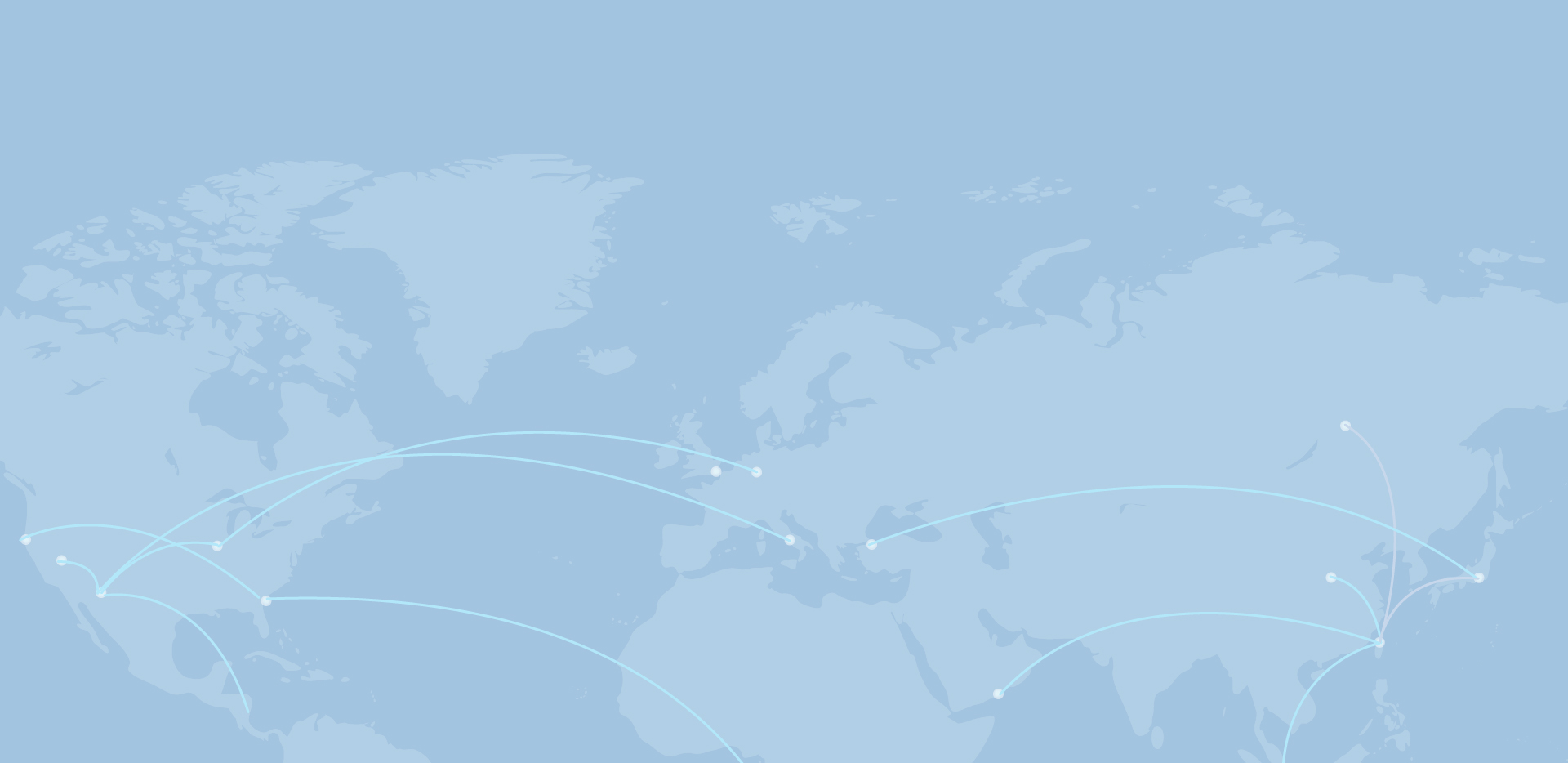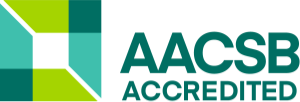| 標題 | 99N15-綠色資訊科技採行意向研究 - 計劃行為理論之應用 The Adopting Intention of Green Information Technology - Application of the Theory of Planned Behavior |
| 姓名 | 李俊德 |
| 指導教授 | 黃義俊 老師 |
| 畢業日期 | 2011/06 |
| 附件檔案 | 99N15 |
| 參考連結 | |
| 摘要 | 本研究冺用Pearson相關分析結果發現:採行綠色資訊科技之態度、主觀規範與及知覺行為控制各構陎,與過去行為及採行意向間均有顯著相關。接著,以從複迴歸分析結果發現:(1)態度變數及知覺有用性與相容性構陎皆顯著正向影響採行意向;(2)主觀規範變數及上級影響與同儕影響構陎皆正向影響採行意向;(3)知覺行為控制變數及有冺條件構陎正向影響採行意向;(4) 過去環保設備之請購經驗,對其知覺行為控制有正向影響;(5)過去環保設備之請購經驗,對其採行意向有正向影響。從中介效果分析結果則發現:(6) 知覺行為控制在過去行 |
| 參考文獻 | 一、中文部分 1. Michael Dell(2008年5月9日)。綠色IT為實現低碳經濟的關鍵。2010年9月5日取自:http://sinwen.com/?p=1819。 2. 王杰烽(2007)。統一化結構創意思考於綠色創新的應用。國立成功大學機械工程學系碩士論文。 3. 王淑娟(2002)。資訊系統採用行為之研究-以某大學資訊系統為例。國立雉林科技大學資訊管理系碩士在職專班碩士論文。 4. 方世榮(1994)。行銷管理學分析、計劃、執行與控制(第三版)。台北:東華書局。 5. 行政院法規會(20082月4日)。溫室氣體減量法草案。 6. 行政院環保署(2006)。環境保護統計名詞定義。P.19。 7. 行政院環保署(2010年8月31日)。「行政院環境保護署協助國內耗能產業盤查溫室氣體排放」。行政院環保署,2010年9月10日,取自: http://www.ghgregistry.tw/Information/Information Infor.aspx?r id=373) 。 8. 朱俊謀(2007)。綠色供應鏈管理之環境績效指標研究。南華大學環境管理研究所碩士班碩士論文。 9. 江伊騰(2007)。綠色供應商、綠色創新及競爭優勢關連性之研究。明志科技大學工業管理研究所碩士論文。 10. 台灣IDC (2009年1月13日)。2009年台灣資訊電信市場十大趨勢預測:經濟不景氣下的科技成長動力。2010年9月12日,取自:http://www.idc.com.tw/ about/detail.jsp?id=NjE=。 11. 台灣綠色公民行動聯盟(2009年12月17日)。我感覺良好的(氣候政策,無助低碳台灣)。2010年9月12日取自:http://www.gcaa.org.tw/modules/tadnews/ index.php?nsn=186。 12. 李思佳(2009)。探討大學生使用數位學習系統持續使用意圖之研究-結合接 116 受後資訊系統持續使用模式、整合性科技接受理論(UTAUT)及資訊成功模型。國立中央大學企業管理研究所碩士論文。 13. 何雨虹(2006)。以計畫行為理論探討消費者購買炫耀性商品之意圖。國立中正大學行銷管理研究所未出版之碩士論文。 14. 邱柏鈞(2008)。運動彩券購買意圖之研究-計畫行為理論之應用。國立台灣師範大學運動與休閒管理研究所未出版之碩士論文。 15. 邱顯烺(2010)。以解構計畫行為理論探討購物網站選擇行為。北台灣科學技術學院電子商務研究所碩士論文。 16. 林文彬(2010)。iThome 2010年CIO大調查,iThome on-line,2010年9月10日,取自:http://www.ithome.com.tw/itadm/article.php?c=59393ands=7 17. 林易詳(2009)。體制壓力、高階回應、綠色創新的採行與組織績效之關聯性研究 – 以台灣地區電機電子產業為例。國立高雄應用科技大學企業管理系碩士論文。 18. 林志堅(2004)。產業的綠色產品及綠色管理策略 – 歐盟RoHS、WEEE指令的因應之道。看守台灣季刊,45-58。 19. 林育昇、許富盛(2010)。以科技接受模式探討使用微網誌意圖之因素─以噗浪〈Plurk〉為例。中華傳播學會年會論文,P18. 20. 林秀儀(2008)。企業構建綠色管理之關鍵因素分析。國立高雄第一科技大學運籌管理系碩士論文。 21. 林限那(2008)。都會區消費者綠色消費行為之研究。中國文化大學國際企業管理研究所碩士論文。 22. 林傑彬、陳湘、劉明德(2002)。SPSS 11統計分析實務設計寶典。台北:博碩。 23. 洪詵青(2009)。城鄉居民綠色消費態度與綠色消費行為之研究。亞洲大學經營管理學系碩士論文。 24. 官建維(2001)。綠色採購對ISO14000環境管理的支援模式分析。南華大學環境管理研究所碩士論文。 25. 吳素華、李國鼎、莊順斌、駱貞羽(2010)。探尋Green Ocean:綠色資訊科技 117 應用案例集。P.27。 26. 林柏伶(2005)。影響教師實施資訊科技融入學科教學之行為意願研究。國立彰化師範大學商業教育學系碩士論文。 27. 吳明隆(2007)。結構方程式模式AMOS的操作與應用。台北:五南出版社。 28. 吳欣靜(2009)。環保標章對綠色消費的影響研究。南華大學環境管理研究所碩士論文。 29. 吳舒婷(2009)。藥妝品購買行為意圖探討-創新擴散模型及計畫行為理論觀點。國立成功大學企業管理學系碩士論文。 30. 吳思學(2009)。以科技接受模式探討蘋果電腦之使用行為意圖。中興大學行銷學系所學位論文。 31. 吳德興(2010年9月20日)。推動經濟成長-工業局打造產業綠色競爭力。經濟日報,能源環保版。2010年9月30日,取自:http://ednews.com.tw/article/ view.jsp?aid=318329andcid=11。 32. 經濟部能源局(2009)。為何要做溫室氣體減量。台北市:經濟部能源局。2010年9月2日,取自:http://www.cadiis.com.tw/energy/index.php?option=com_ content&view=article&id=43&Itemid=13。 33. 曾祥龍(2009)。以計畫行為理論探討企業社會責任之行為意圖。國立高雄應用科技大學商務經營研究所碩士論文。 34. 曾瑞譙(2009)。電腦輔助教學軟體使用後之效益分析-科技接受模式的觀點與應用。新竹教育大學教育學報第二十六卷第二期,P.128-164。 35. 馬鴻文(2006)。綠色旅館之節能設計與能源教育(III)。行政院國家科學委員會專題研究計畫成果報告(計畫編號:NSC 95-ET-7-002-011-ET),未出版。 36. 徐良政(2008)。PCB製造業對綠色供應鏈評核之因應探討 – 以桃園地區為例。國立中央大學環境工程研究所碩士論文。 37. 徐慧娟(2009)。消費者購買綠色產品之意願實證研究—計畫行為理論觀點。國立成功大學國際企業研究所碩士論文。 38. 宣緯華(2001)。影響學校採購人員採構綠色產品之因素探討。國立中山大學 118 公共事務管理研究所碩士論文。 39. 張力中(2010)。大學生軟體盜版態度與行為差異因素之研究。輔仁大學資訊管理學系碩士論文。 40. 張廷彰, 陳良澤, 廖育鋒與劉依蒔(2008)。以科技接受模式探討不同年齡層對Wii 遊戲機的使用認知。中華民國人因工程學會。 41. 張佳尹(2003)。學校執行綠色採購現況與需求之研究。國立東華大學環境政策研究所碩士論文。 42. 張煜堅(2010)。影響「現職志願役士官、兵」留職意圖之研究-解構式計劃行為理論之應用。國立高雄應用科技大學企業管理系研究所碩士論文。 43. 相元翰(2008)。綠色行銷下消費者之綠色消費行為分析。國立交通大學交通運輸研究所碩士學位論文。 44. 黃正德(2001)。台灣中小製造業高階主管對企業e化意向之研究-以TPB模式來探討。中山大學高階經營管理研究所碩士論文。 45. 黃義俊(2001)。企業的綠色管理之整合性模式的實證研究 – 以化工與機電產業為例。國立中山大學企業管理學系博士論文。 46. 黃義俊(2003)。環保導向的價值觀與企業的綠色管理關係之實證研究。環境與管理研究,4(2),P.17-60。 47. 黃義俊、鄭時宜、劉德芳(2006)。以計劃行為理論探討女性創業之意向。2006創新、整合與應用研討會,46-55。 48. 黃懷谷(2009)。健身俱樂部會員之知覺運動效益與運動行為之研究。靜宜大學觀光事業學系碩士論文。 49. 黃齡逸(2004)。討影響使用者採納中華電信MOD的關鍵因素。國立中山大學傳播管理研究所碩士論文。 50. 郭德賓(2004)。不同類型社區居民資源回收行為意圖之研究。環境與管理研究,5(1),19-39 。 51. 陳怡君(2009)。台灣電子公司因應歐盟環保指令及綠色供應鏈管理規範之採購做法探討。國立清華大學工業工程暨工程管理研究所碩士論文。 119 52. 陳雉蘭(2008)。百年來台灣氣候的變化。科學發展,424,6-11。 53. 陳雅雈 (2009)。以計畫行為理論探討消費者對綠色產品的購買意願之研究。南華大學企業管理系碩士論文,未出版。 54. 湯宗益(2003)。遠距教學系統滿意度與接受度之研究:以適應性結構化理論為基礎。國立政治大學資訊管理學系碩士論文。 55. 游于逸(2010)。網路團購動機與衝動性購買調節效果之研究。國立高雄大學碩士論文。 56. 葉旭榮(1997)。志工參與行為意向模式的建構及其在志工人力資源招募的應用-以老人福冺機構志工招募為例。中山大學公共事務管理研究所碩士論文。 57. 蔣欣穎(2008)。以計劃行為理論探討百貨服務業員工顧客導向之行為-以漢神百貨公司專櫃銷售人員為例。國立成功大學經營管理碩士論文。 58. 謝珮珊(2003)。食品綠色消費行為意圖及其相關因素研究-台北縣某高中學生為例。國立台灣大學衛生教育學系碩士論文。 59. 魏翠珍(2007)。以解構計劃行為理論分析3G手機購買意圖之研究。開南大學企業管理學系碩士班論文。 60. 簡珮珊(2008)。我國高中職圖書館主任參與合作組織之行為意向研究。國立臺灣師範大學圖書資訊學研究所碩士論文。 61. 蔡宗佑(2009)。家長對孩童網路分級過濾系統使用意向之研究。國立成功大學電信管理研究所碩士論文。 62. 董峰呈(2008)。冺用新混合模型探討影響消費者使用網路銀行行為意圖之實證研究。國立成功大學企業管理研究所碩士論文。 63. 賴怡潔(2007)。提升消費者購買綠色產品之意圖研究。銘傳大學管理研究所碩士論文。 64. 鄭培華(2004)。國民小學資訊系統採用行為之研究,中正大學資訊管理研究所碩士論文。 65. 經建會(2008)。永續能源政策綱領-節能減碳行動方案。 66. 經建會(2010)。落實「永續能源政策綱領-節能減碳行動方案」型塑節能減 120 碳的社會。2010年9月12日,取自:http://www.cepd.gov.tw/ml.aspx?sNo =0010626。 67. 經濟部能源局(2009年4月)。98年全國能源會議總結報告,核心議題:能源管理與效率提升。全國能源會議大會,經濟部能源局。 68. 經濟部工業局(2006)。國內環保產業發展現況報告。2006年環保產業發展推動計劃,21。 69. 經濟部工業局(2010)。陎對低碳經濟時代來臨,經濟部工業局協助產業塑造MIT綠色產品形象。2010年9月10日,取自:http://www.moeaidb.gov.tw/external/ ctlr?pro=newsViewandid=9240。 70. 蔡淑芳(2005)。綠色供應商之評選模式研究 – 以IC封裝業為例。國立中山大學企業管理學系碩士在職專班碩士論文。 71. 顏志忠(2010)。企業導入綠色資訊科技關鍵因素之探討。國立高雄第一科技大學資訊管理研究所碩士論文。 72. 詹淑清(2005)。綠色供應鏈之廠商績效研究:以台灣資訊電子產業為例。國立台北大學企業管理系博士論文。 73. 湯宗益(2003)。遠距教學系統滿意度與接受度之研究:以適應性結構化理論為基礎。國立政治大學資訊管理學系碩士論文。 74. 劉志堅(2004)。產業的綠色產品及綠色管理策略 - 歐盟RoHS 、WEEE 指令的因應之道。Taiwan Watch Vol.6, No.4 / Winter, 2004, P.45-58。 75. 劉宗旻(2009)。中等學校教師採用教學部落格因素之研究。國立彰化師範大學工業教育與技術學系碩士論文。 76. 劉德芳(2006)。以整合性的觀點實證研究女性創業之意向-以「飛雁學員」為例。樹德科技大學經營管理研究所碩士論文。 77. 蘇郁喬(2009)。以計畫行為理論、科技接受模式2探討綠色產品管理系統使用意圖-以台灣電子產業為例。國立成功大學工學院工程管理專班碩士論文。 78. 蕭銘雄、鄭曉帄(2008)。Journal of e-Business,第十卷,第一期,2008年3月,1-26。 121 79. 韓婷婷(1999)。民眾參與環境影響評估的行為意向模式之研究。國立中山大學公共事務管理研究所碩士論文。 二、英文部分 1. Ajzen, I., and Fishbein, M. (1980). Understanding Attitude and Predicting Social Behavior. Prentice-Hall, Inc., Englewood Cliffs, New Jersey. 2. Ajzen, I. (1985). From Intention to Actions: A Theory of Planned Behavior. In J. Kuhl and J. Beckman (Eds.). Actions-Control: From Cognition to Behavior, Heidelberg, 11-39 Springer. 3. Ajzen, I. and Madden, T. (1986). Prediction of Goal-Directed Behavior: Attitude, Intentions, and Perceived behavioral Control. Journal of Experimental Social Psychology, 22, 452-474. 4. Ajzen, I. (1987). Attitudes, Traits, and Actions: Dispositional Prediction of Behavior in Social Psychology. Advances in Experimental Social Psychology. 20, 1-63. 5. Ajzen, I. (1991). The Theory of Planned Behavior. Organizational Behavior and Human Decision Processes, 50(2), 179-211. 6. Ajzen, I. (2002a). Perceived Behavioral Control, Self-Efficacy, Locus of Control, and the Theory of Planned Behavior. Journal of Applied Social Psychology, 32(2002), 665-683. 7. Ajzen, I. (2002b). Residual Effects of Past on Later Behavior: Habituation and Reasoned Action Perspectives. Personality & Social Psychology Review, 6(2), 107-122. 8. Ajzen, I. (2006). Behavioural Intentions Based on the Theory of Planned Behaviour. http://people.umass.edu/aizen/pdf/tpb.intervention.pdf. (last accessed: 2011-02- 12). 9. Armitage, C. J., and Conner, M. (2001). Efficacy of the theory of planned behavior: A meta-analytic review. British Journal of Social Psychology,40, 471–499. 10. Asia-Pacific Economic Cooperation (2007). APEC and Climate Change. 122 http://www.apec.org/Press/News-Releases/2007/0821_sg_climatechange.aspx. (last accessed: 2010-9-9). 11. Ashford, N. A. (1993). Understanding Technological Responses of Industrial Firms to Environmental Problems: Implications for Government Policy. In J. Schot and K. Fischer (Eds.). Environmental Strategies for Industry: International Perspectives on Research Needs and Policy Implications: 277-310. Washington, DC: Island Press. 12. Bamberg, S., and Schmidt, P. (2003). Incentives, Morality or Habit? Predicting Students‘ Car Use for University Routes with the Models of Ajzen, Schwartz, and Triandis. Environment and Behavior, 35, 264–285. 13. Bandura, A. (1982). Self-Efficacy Mechanism in Human Agency. American Psychologist, 37(2), 122-147. 14. Bandura, A. (1986). Social Foundations of Thought and Action: A Social Cognitive Theory, Englewood Cliffs, NY: Prentice-Hall. 15. Bandura, A. (1997). Self-efficacy: The Exercise of Control. New York: Freeman. 16. Baron, R. M. and Kenny, D. A. (1986). The Moderator-Mediator Variable Distinction in Social Psychological Research: Conceptual, Strategic, and Statistical Considerations. Journal of Personality and Social Psychology, 51(6), 1173-1182. 17. Bhattacherjee, A. (2000). Acceptance of e-Commerce Services: The Case of Electronic Brokerages. IEEE Transactions of Systems, Man, and Cybernetics, 30(4), 411-420. 18. Bagozzi, R. P. (1981). Attitudes, Intentions, and Behavior: A Test of Some Key Hypotheses. Journal of Personality and Social Psychology, 41(4), 607-627. 19. Bagozzi, R. P. (1982). A Field Investigation of Causal Relations among Cognitions, Affect, Intentions, and Behavior. Journal of Marketing Research, 19(4), 562-583. 20. Bagozzi, R. P. (1983). A Holistic Methodology for Modeling Consumer Response to Innovation. Operations Research, 31(1), 128-176. 21. Beach, G. (2008). Are You Green? CIO. http://www.cio.com/article/188100/ Are_You_Green. (last accessed: 2010-09-12). 22. Berger, I. (1993). A Framework for Understanding the Relationship Between 123 Environmental Attitudes and Consumer Behaviors, In Varadarjan R. and Jaworski B. (eds.). Marketing Theory and Application, American Marketing Association, Chicago, 157-163. 23. Brodkin, J. (2007). Strategic technologies for 2008, 24, Network World. 24. Cameron, K. W. (2009). Green Introspection. Computer, 42(1), 101-103. 25. Carter, P. (2009). The Green Office: The Importance of Peripherals in the Green IT Ecosystem. Asia/Pacific Green IT Research, IDC Asia/Pacific. 26. Chau, P.Y. K., and Hu, P.J. (2002). Examining a Model of Information Technology Acceptance by Individual Professionals: An Exploratory Study. Journal of Management Information systems, 18(4), 191-229. 27. Clemens, B., and Douglas, T. J. (2006). Does Coercion Drive Firms to Adopt ‗Voluntary‘ Green Initiatives? Relationships among Coercion, Superior Firm Resources, and Voluntary Green Initiatives. Journal of Business Research, 59, 4 (4), 483-91. 28. Chu, P.Y., Hsiao, N.Y., Lee, F.W., and Chen, C.W. (2004). Exploring Success Factors for Government Electric Tendering System: Behavioral Perspectives from End Users, Submitted to Government Information Quarterly, 21, 29-234. 29. Cooke, R.., Cooper, T., Schüz, B., and Sniehotta, F. (2006). Motivational and Volitional Determinants of Binge-Drinking Behaviour. Poster Presented at The 2006 Student Members Groups Annual Conference of the British Psychological Society, Cardiff 2006. 30. Cordano, M., and Frieze, I.H. (2000). Pollution Reduction Preferences of U.S. Environmental Managers: Applying Ajzen‘s Theory of Planned Behavior. Academy of Management Journal, 43, 4; ABI/INFORM Global, 627-641. 31. Conner, M., and Armitage, C.J. (1998). Extending the Theory of Planned Behavior: A Review and Avenues for Further Research. Journal of Applied Social Psychology, 28, 1429–1464. 32. Cuieford, J.P. (1965). Fundamental Statistics in Psychology and Education. N.Y.: McGraw-Hill. 33. Council of The European Union (2009). Council Adopts Climate-Energy Legislative Package. Bressels, 6 April 2009, Presses 77. 124 34. Davis, F.D., Bagozzi, R.P., and Warshaw, P.R. (1989). User Acceptance of Computer Ttechnology: A Comparison of Two Theoretical Models. Management Science, 35(8), 982-1003. 35. Davis, F.D. (1989). Perceived Usefulness, Perceived Ease of Use, and User Acceptance of Information Technology. MIS Quarterly, 13(3), 319-339. 36. Department of Energy (2007). Partnering with Computer Data Centers. http:// www1.eere.energy.gov/industry/saveenergynow/partnering_data_centers.html. (last accessed: 2010-9-12). 37. Dieleman, H., and de Hoo, S. (1993). Toward a Tailor-made Process of Pollution Prevention and Cleaner Production: Results and Implications of The PRISMA Project, In: Schot, J., and Fischer, K. (Eds.), Environmental Strategies for Industry International Perspectives on Research Needs and Policy Implications. Island Press, Washington D.C., 245-276. 38. Elliot, S. (2007). Environmentally Sustainable ICT: A Critical Topic for IS Research, Pacific Asia Conference on Information Systems (PACIS 2007), Paper 114. 39. Evans, J.R., and Lindsay, W.M. (2008). Managing for Quality and Performance Excellence. Thomson South-Western, Mason, OH. 40. Fielding, K.S., McDonald, R., and Louis, W.R. (2008). Theory of Planned Behaviour, Identity and Intentions to Engage in Environmental Activism. Journal of Environmental Psychology, 28(4), 318-326. 41. Fishbein, M., and Ajzen, I. (1975). Belief, Attitude, Intention and Behavior. An Introduction to Theory and Research 1st Edn. Addison-Wesley, Reading, MA. 42. Fusilier, M., and Durlabhji, S. (2005). An Exploration of Student Internet Use in India: The Technology Acceptance Model and the Theory of Planned Behavior. Campus-Wide Information Systems, 22, 233 – 246. 43. Fielding, K.S., McDonald, R., and Louis, W.R. (2008). Theory of Planned Behaviour, Identity and Intentions to Engage in Environmental Activism. Journal of Environmental Psychology, 28(4), 318-326. 44. Forte, M., and Lamont, B.T. (1998). The Bottom Line Effects of Greening. Academy of Management Executive 12, 1 (2), 89-90. 125 45. Gartner (2007). Gartner: Data Centres Account for 23% of Global ICT CO2 Emissions. http://www.gartner.com/it/page.jsp?id=530912. (last accessed: 2010- 10-14) 46. Gartner (2008). Gartner Identifies the Top 10 Strategic Technologies for 2009. http://www.gartner.com/it/page.jsp?id=777212. (last accessed: 2010-9-14). 47. GeSI (2008). SMART 2020: Enabling The Low Carbon Economy in the Information Age. Global e-Sustainability Initiative and the Climate Group, London. 48. Gibson, S. (2008). How Green Is Your IT Valley?. E-Week, 21 Jan. 2008, 46-53. 49. Hagger, M.S., Chatzisarantis, N., and Biddle, S.J.H. (2001). Influence of Self- Efficacy and Past Behavior on The Physical Activity Intentions of Young People. Journal of Sports Sciences, 19, 711-725. 50. Hair, J.F., Anderson, R.E., Tatham, R.L., and Black, W.C. (1998). Multivariate Data Analysis with Reading. New Yorker: Maxwell Macnillan Internation. 51. Hair, J. F., Black, W. C., Babin B. J., Anderson, R.E., and Tatham, R. L. (2006). Multivariate Data Analysis. 6th. New Jersey: Person Education. 52. Hoeppe, P. (2009). High Demand for Climate Data in the Insurance Industry for Risk Modelling and Development of New Insurance Products. Geo Risks Research/Corporate Climate Centre, Munich Re; 3rd World Climate Conference, Geneva, August 31, 2009. 53. Hopper, A., and Rice, A. (2008). Computing for the Future of the Planet. Philosophical Transactions of the Royal Society A: Mathematical, Physical and Engineering Sciences, 366, 1881, 3685–3697, October 2008. 54. Hung, S.Y., Ku, C.Y., and Chang, C.M. (2003). Critical Factors of WAP Services Adoption: an Empirical Study. Electronic Commerce Research and Applications, 2(1), 42-60. 55. Hung, S.Y., and Chang, C.M. (2005). User Acceptance of WAP Services: Test of Competing Theories. Computer Standards & Interfaces, 27(4), 359-370. 56. IDC (2008). IDC Predictions 2009, An Economic Pressure Cooker Will Accelerate The IT Industry Transformation. http:// www.idc.com/getdoc.jsp?containerId =215519. (last accessed: 2010-9-12) 57. International Energy Agency (IEA) (2009), Key World Energy Statistics 2009. 126 Paris, Head of Communication and Information Office. 58. International Energy Agency (IEA) (2010), Key World Energy Statistics 2010. Paris, Head of Communication and Information Office. 59. IPCC (2007). Climate Change 2007. http://www.apec.org/Press/News-Releases /2007/0821_sg_climatechange.aspx. (last accessed:2010-9-9) 60. Karahanna, E., and Straub, D.W. (1999). The Psychological Origins of Perceived Usefulness and Ease-of-Use. Information & Management, 35, 237-250. 61. Kim, S. (2008). Appropriation of Wireless Technology: Direct Impacting Factors on the Youth‘s Adoption Intention and Usage of the Wireless Application Protocol Phone. Information Technology Journal. ISSN 1812-5638. 62. Krueger, N.F., Relley, M.D., and Carsrud, A.L. (2000). Competing Models of Entrepreneurial Intentions. Journal of Business Venturing, 15, 411-432. 63. Kurp, P. (2008). Green Computing. Communications of the ACM, 51(10), 11-13. 64. Liao, C.C., Chen, J. L., and Yen, D.C. (2007). Theory of Planning Behavior (TPB) and Customer Satisfaction in The Continued Used of E-Service. An Integrated Model. Computers in Human Behavior, 23(6), 2804-2822. 65. Liker, J.K., and Sindi, A.A. (1997). User Acceptance of Expert Systems: A Test of The Theory of Reasoned Action. Journal of Engineering and Technology Management, 14(2), 147-173. 66. Linnanen, L. (2002). An Insider‘s Experiences with Environmental Entrepreneur- ship. Greener Management International, (38), 71-80. 67. Lynch, A., and Gomaa, M. (2003). Understanding The Potential Impact of Information Technology on The Susceptibility of Organizations to Fraudulent Employee Behavior. International Journal of Accounting Information Systems, 4(4), 295-308. 68. Madden T.J., Ellen, P.S., and Ajzen, I. (1992). A Comparison of The Theory of Planned Behavior and the Theory of Reasoned Action. Personality and Social Psychology Bulletin, 18(1), 3-9. 69. Macey, S.M., and Brown, W.A. (1983). Residential Energy Conservation: The Role of Past Experience in Repetitive Household Behavior. Environment and Behavior, 15, 123-141. 127 70. Mann, H., Grant, G., and Singh Mann, I.J. (2009). Green IT: An Implementation Framework. AMCIS 2009 Proceedings. Paper 121. 71. Mathieson, K. (1991). Predicting User Intentions: Comparing the Technology Acceptance Model with the Theory of Planned Behavior. Information Systems Research, 2, 3 (September 1991), 173-191. 72. McMillan, B., Higgins, A. R., and Conner, M. (2005). Using an Extended Theory of Planned Behaviour to Understand Smoking amongst Schoolchildren. Addiction R search & Theory, 13(3), 293-306. 73. Meisner, D., Gold, B.T., and Wenisch, T.F. (2009). Powernap: Eliminating Server Idle Power. Proceedings of The International Conference on Architectural Support for Programming Languages and Operating Systems (ASPLOS‘2009), ACM/IEEE, Washington DC, March 2009. 74. Mingay, S. (2007). Green IT: The New Industry Shock Wave. Gartner RAS Research Note G00153703. Gartner. 75. Miniard, P., and Cohen, J. B. (1979). Isolating Attitudinal and Normative Influences in Behavioral Intentions Models. Journal of Marketing Research, 16, 102-110. 76. Miniard, P., and Cohen, J.B. (1981). An Examination of Fishbein-Ajzen Behavioral-Intentions Model's Concepts and Measures. Journal of Experimental Social Psychology, 17, 309-339. 77. Miniard, P., and Cohen, J. B. (1983). Modeling Personal and Normative Influences on Behavior. Journal of Consumer Research, 10, 169-179. 78. Money, W., and Turner, A. (2004). Application of the Technology Acceptance Model to a Knowledge Management System. Proceedings of the 37th Hawaii International Conference on System Sciences, 2004, 1-9. 79. Molla, A., Cooper, V., Corbitt, B., Deng, H., Peszynski, K., Pittayachawan, S., and Teoh, S.Y. (2008). E-Readiness to Greadiness: Developing a Green Information Technology Readiness Framework. 19th Australasian Conference on Information Systems, Christchurch, New Zealand, 3-5 December. 80. Molla, A. (2008). GITAM: A Model for the Acceptance of Green IT. 19th Australasian Conference on Information Systems. Christchurch, New Zealand, 3-5 December. 128 81. Molla, A., and Cooper, V. (2010). Green IT Readiness: A Framework and Preliminary Proof of Concept. Australasian Journal of Information Systems, 16(2), 5-23. 82. Moore, G.C., and Benbasat, I. (1991). Development of an Instrument to Measure the Perceptions of Adopting an Information Technology Innovation. Information Systems Research, 2(3), 192-222. 83. Moore, G.C., and Benbasat, I. (1993). An Empirical Examination of a Model of the Factors Affecting Utilization of Information Technology by End-Users. Unpublished Working paper. University of British Columbia, Faculty of Commerce, November. 1993. 84. Murugesan, S. (2007). Going Green with IT: Your Responsibility toward Environmental Sustainability. Cutter Business-IT Strategies Executive Report, 10(8), 1-25. 85. Murugesan, S. (2008). Harnessing Green IT: Principles and Practices. IT Professional, 10(1), 24-33. 86. Mykytyn, P. P., and Harrision, D.A. (1993). The Application of the Theory of Reasined Action to Senior Management and Strategic Information System. Information Reasources Managerment Journal, 6, 15-26. 87. Nasco, S.A., Toledo, E.G., and Mykytyn, P.P. (2008). Electronic Commerce Adoption in Chilean SMEs. Journal of Business Research, 61(6), 697-705. 88. Stern, N. (2006). The Economics of Climate Change– The Stern Review. Cambridge, 2-23. 89. Nunnally, J. C. (1978). Psychometric Theory. McGraw Hill, New York. 90. O‘Connor, C. (2008). Greening the Data Center. http://news.zdnet.com/2100-9595 _22-249940.html. (last accessed: 2010-9-12). 91. Orsato, R.J. (2006). Competitive Environmental Strategies: When Does It Pay to Be Green? California. Managament Review, 48(2), 127-143. 92. Ouellette, J.A., and W. Wood (1998). Habit and Intention in Everyday Life: The Multiple Processes by Which Past Behavior Predicts Future Behavior. Psychology Bulletin, 124(1), 54-74. 93. Peach, M. (2009). The Utility of the Theory of Planned Behavior to Facilitate 129 Employee Support for Organisational Change– Communication and Engagement Strategy and Proving Return-on-Investment. ANZCA09 Communication, Creativity and Global Citizenship. Brisbane, July 2009. 94. Pearce, D.W. (1996). Global Environmental Value and the Tropical Forests: Demonstration and Capture. In: Adamowicz, W., Boxall, P., Luckett, M., Phillips, W., and White, W. (Eds). Forestry, Economics and The Environment. CAB International, Wallingford. 95. Pollack, T.A. (2008). Green and Sustainable Information Technology: A Foundation for Students. ASCUE 2008 Proceedings, 63-72. 96. Rogers, E. M. (1983). Diffusion of Innovations. Third Edition, N.Y.: Free Press. 97. Rugman, A.M., and Verbeke, A. (1998). Corporate Strategies and Environmental Regulations: An Organizing Framework. Strategic Management Journal, 19(4), 363-375. 98. Ryan, E.J. (2008). Building Sustainable IT. Cutter IT Journal, 21(2), 6-12. 99. Saran, C. (2007). Datacentre Kit to Be Given Energy Star Green Rating. http:// www.computerweekly.com/Articles/2008/02/28/228258/Datacentre-kit-to-be-given-Energy-Star-green-rating.htm. (last accessed: 2010-9-12) 100. Sarkar, P., and Young, L. (2009). Managerial Attitudes Towards Green IT: An Explorative Study of Policy Drivers, PACIS 2009 Proceedings. Paper 95. 101. Sayeed, L., and Gill, S. (2009). Implementation of Green IT: Implications for a Dynamic Resource, AMCIS 2009 Proceedings. Paper 381. 102. Scaramella, J., and Healey, M. (2007). Service-Based Approaches to Improving Data Center, Thermal and Power Efficiencies. IDC White Paper #206687, IDC. 103. Shimp, T., and Kavas, A. (1984). The Theory of Reasoned Action Applied to Coupon Usage. Journal of Consumer Research, 11, 795-809. 104. Taylor, S., and Todd, P.A. (1995a). Understanding Information Technology Usage: A Test of Competing Models. Information Systems Research, 6(2), 144-176. 105. Taylor, S., and Todd, P.A. (1995b). Decomposition and Crossover Effects in the Theory of Planned Behavior: A Study of Consumer Adoption Intentions. International Journal of Research in Marketing, 12(2), 137-155. 106. Taylor, S., and Todd, P.A. (1995c). Assessing IT Usage: The Role of Prior 130 Experience. MIS Quarterly, 19(4), 561-570. 107. Unhelkar, B., and Dickens, A. (2008). Lessons in Implementing ‗Green‘ Business Strategies with ICT. Cutter IT Journal, 21(2), 32-39. 108. United Nation (1998). Kyoto Protocol to the United Nations Framework Convention on Climate Change. The United Nations Framework Convention for Climate Change. http://unfccc.int/resource/docs/convkp/kpeng.pdf. (last accessed: 2010-9-11). 109. U.S. Environmental Protection Agency (2007). Report to Congress on Server and Data Center Energy Efficiency Public Law, 109-431. 110. U.S. Department of Energy (2007). Energy Independence and Security Act of 2007. http://www1.eere.energy.gov/femp/regulations/eisa.html. (last accessed: 2010-9-27) 111. Venkatesh, V., and Davis, F.D.(2000). A Theoretical Extension of the Technology Acceptance Modes: Four Longitudinal Field Studies. Management Science, 46(2), 186-204. 112. Venkatesh, V., Morris, M.G., and Ackerman P. L. (2000). A Longitudinal Field Investigation of Gender Differences in Individual Technology Adoption Decision-Making Processes, Organizational Behavior and Human. Decision Processes, 83(1), 33–60. 113. Vizard, M. (2008). How to Go Green, Baseline. Ziff Davis Media Inc., 18, http: //www.baselinemag.com/c/a/IT-Management/How-to-Go-Green/. (last accessed: 2010-9-11). 114. Vykoukal, J., Wolf, M., and Beck, R. (2009). Does Green IT Matter? Analysis of the Relationship between Green IT and Grid Technology from a Resource-Based View Perspective, PACIS 2009 Proceedings. Paper 51. 115. Watson, R.T., Boudreau, M.C., Chen, A., and Huber, M.H. (2008). Green IS: Building Sustainable Business Practices. In R. Watson (Ed.), Information Systems, Atlata, GA: Global Text Project. 116. Weiss, M. (2009). APC Forum: Green Information Systems. MIS Quarterly Executive, 8(2), 101-102. 117. Zhou, Z.Y. (2010). Determing Sustainable Waste Management Practices in College and University Dining Services Using the Theory of Planned Behavior. 131 Department of Hospitality Management and Dietetics College of Human Ecology, Kanasas State Univernity, Manhattan, Kansas. |
查看次數:
363




 高雄科技大學
高雄科技大學 企管EMBA
企管EMBA 網站導覽
網站導覽